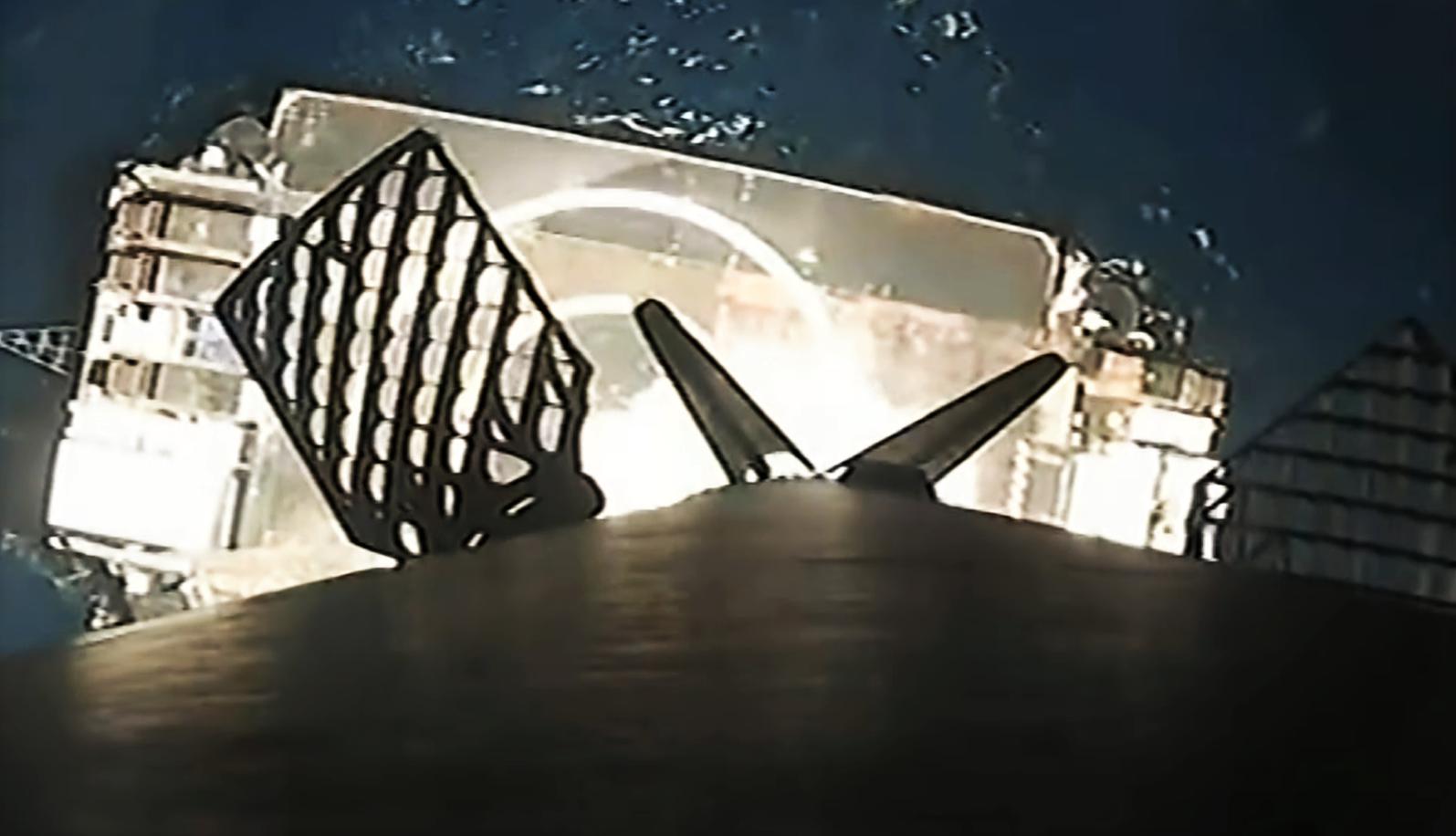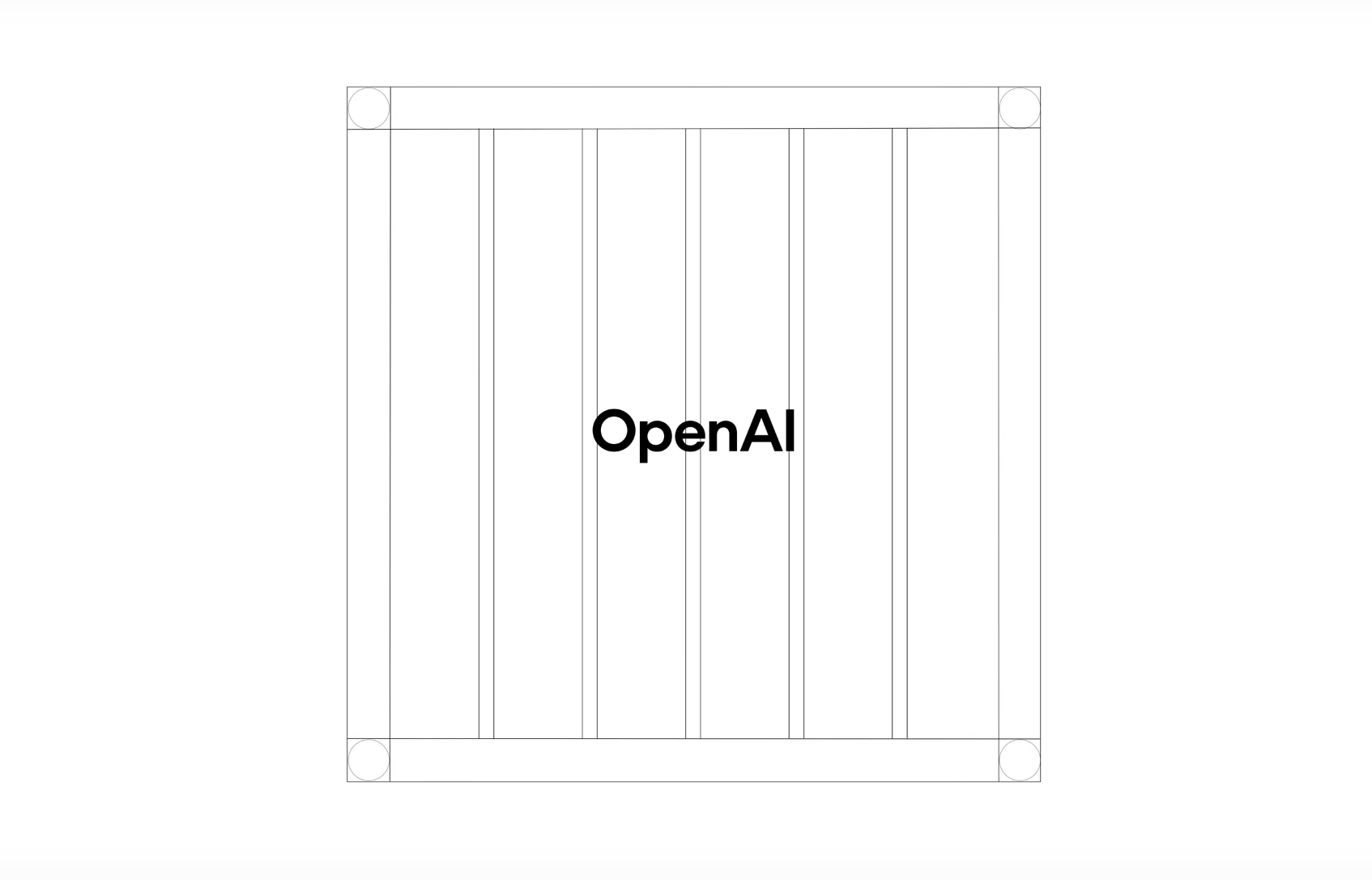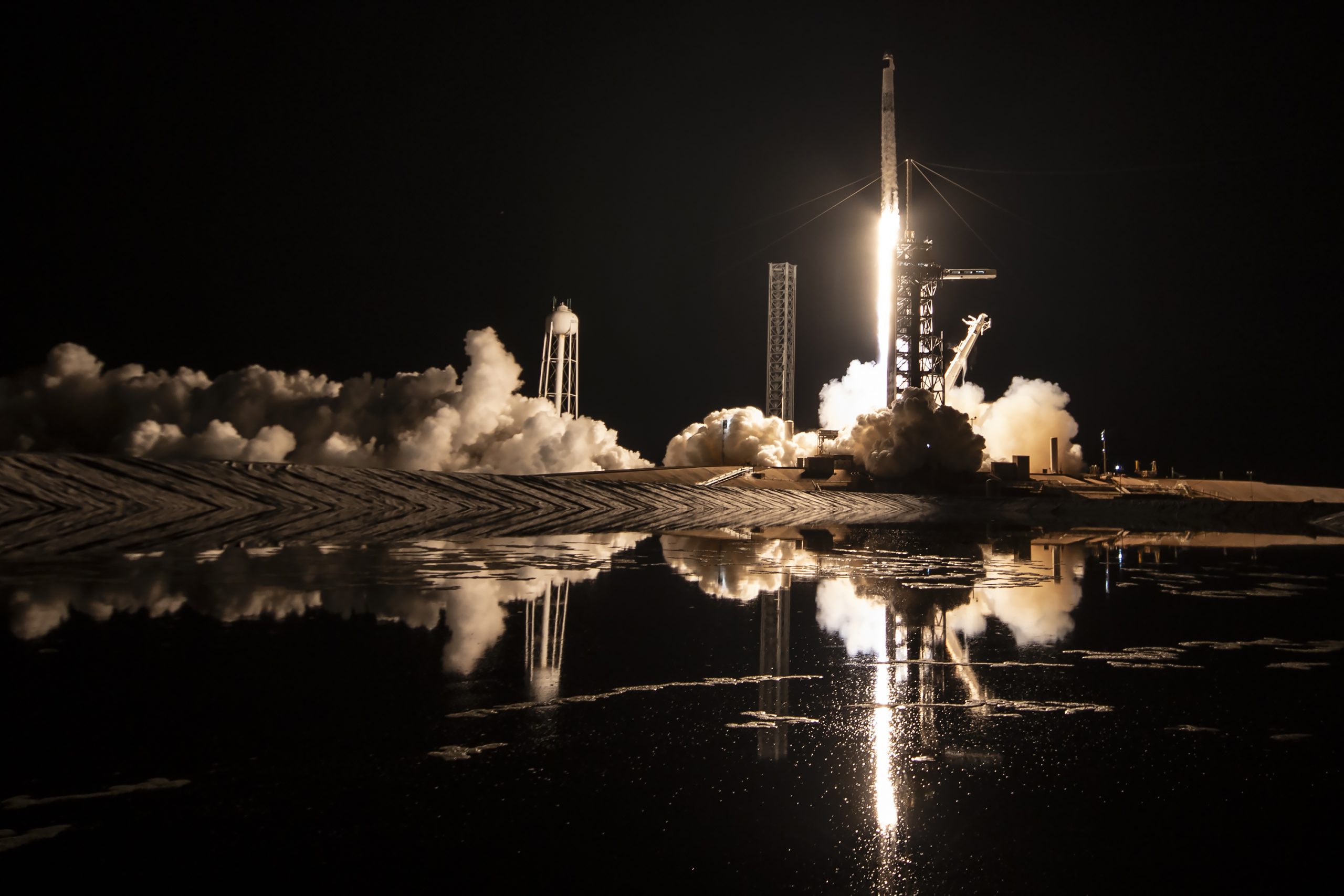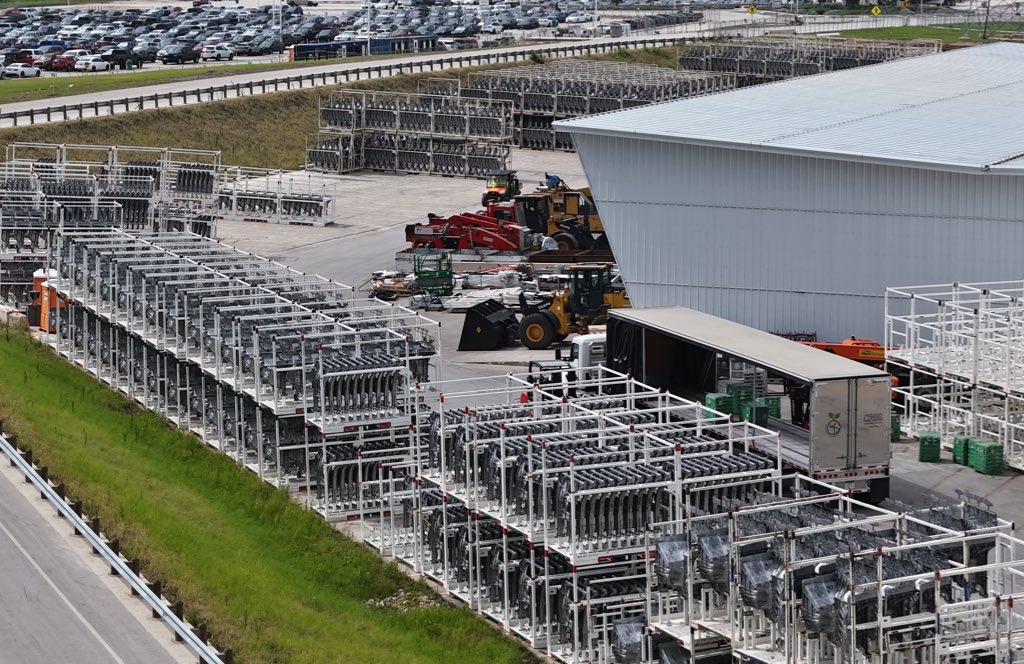

News
SpaceX rocket booster aces tenth launch and landing in major reusability milestone
Update: SpaceX Falcon 9 booster B1051 aced its Starlink-27 launch without issue, becoming the first Falcon booster ever to complete ten consecutive launches and landings.
The mission’s success also means that SpaceX’s internet constellation has more than 1500 functional satellites in orbit, leaving Starlink just two more 60-satellite batches and a few months of orbit-raising away from the ability to deliver internet virtually anywhere on Earth.
Next Spaceflight reports that SpaceX’s next Starlink launch – scheduled as few as five days after the last mission – will see Falcon 9 mark a hugely significant milestone for truly reusable rocketry.
According to Next Spaceflight’s sources, SpaceX has chosen Falcon 9 booster B1051 to launch Starlink-27 – the constellation’s 26th operational mission – as early as 2:42 am EDT (06:42 UTC) on Sunday, May 9th. Scheduled eight weeks (56 days) after the same booster’s last orbital-class launch and landing and just five days after SpaceX’s 25th operational Starlink launch, Starlink-27 will be Falcon 9 B1051’s 10th launch.
While seemingly minor in the scope of SpaceX’s unending roster of spaceflight ‘firsts,’ B1051’s Sunday flight will make Falcon 9 the first reusable liquid rocket booster of any kind to complete ten orbital launches. With that tenth launch and (hopeful) landing, SpaceX will cross a largely symbolic – but still significant – milestone that many traditional aerospace companies and direct competitors have used for at least a decade to rationalize resting on their laurels and continuing to design and build expensive, expendable rockets with no serious path to reusability.
For the entirety of SpaceX’s operational life, its only two real competitors have – and continue to be – US conglomerate United Launch Alliance (ULA) and European conglomerate Arianespace. Almost like clockwork, both extremely conservative groups – comprised of numerous traditional, entrenched aerospace and military contractors – have gone through a similar cycle of belittlement and dismissal, denial, goalpost-moving, disbelief, and resignation as SpaceX announced plans for reusability, began real-world attempts, and gradually worked out the kinks.
As it became clear that SpaceX would succeed in its efforts to vertically launch and land Falcon 9 boosters and ULA and Arianespace had to move their goalposts from “it’ll never work,” both generally settled on largely arbitrary claims that even if SpaceX could land rockets, reuse would never be economical. ULA went even further than Arianespace with an explicit claim – derived from armchair analysis built on opaque, unspecified assumptions – that SpaceX’s approach to Falcon reuse would “require ten [booster] uses to be profitable.” [PDF]
Instead, ULA – proudly standing on its high horse – proffered an alternative called “SMART (Sensible Modular. Autonomous Return Technology) Reuse” for its next-generation Vulcan rocket. Instead of landing and reusing entire boosters like SpaceX, ULA would develop an extremely complex engine section that would detach from Vulcan in mid-air, deploy an experimental inflatable heat shield, and be grabbed out of the sky with a helicopter. Even back when the concept was first announced in 2015, ULA’s schedule for SMART reuse would have seen the technology debut no sooner than the mid 2020s.
More than half a decade later, ULA no longer talks about “SMART Reuse” and it certainly doesn’t talk about the program’s schedule. As late as mid-2020, though, CEO Tory Bruno still parrots ULA’s arbitrary estimate that reusability only makes sense after ten flights per booster – and with the added bonus of new goalposts that demand that that “breakeven flight rate…be achieved as a fleet average.”
Arianespace executives have echoed similar sentiments over the years and more recently implied that it would only ever make sense to invest in SpaceX-style reusability if the conglomerate could guarantee at least 30 launch contracts annually.
In the meantime, Arianespace and ULA all but handed the vast majority of their commercial market share to SpaceX’s far more affordable Falcon 9 and Falcon Heavy. As a result, the company has effectively taken over the commercial spaceflight industry while its relentless, iterative development approach have produced refined Falcon 9 and Heavy rockets with an unprecedented degree of reusability. Looking at all Falcon 9 Block 5 boosters that have flown more than once, the fleet average is already more than five launches less than three years after the Block 5 upgrade debuted.
SpaceX has also demonstrated – multiple times – that it can launch the same Falcon 9 booster twice in less than a month, quite literally halving the Space Shuttle’s 54-day record while likely requiring somewhere between 10 and 100 times less hands-on work. Just last month, NASA gave SpaceX’s reusability work the ultimate blessing when a Falcon 9 booster launched astronauts for the second time. Of the more than 1500 Starlink satellites SpaceX has launched over the last two years, not a single one of those internet satellites flew on a new Falcon 9 booster.
Finally, Falcon 9 booster B1051 is now on track to become the first liquid rocket booster in history to cross the ten-flight mark set by ULA and targeted by SpaceX CEO Elon Musk. For Musk, “ten flights” has long been a line drawn in the sand – explicitly meant to be an arbitrary target. In reality, after flying multiple Falcon 9 boosters six, seven, eight, and even nine times apiece, SpaceX already believes that the rocket’s existing design is capable of significantly surpassing that target.
Perhaps most importantly, despite the fact that Arianespace and ULA have scarcely begun to even attempt to counter Falcon 9 and Falcon Heavy, SpaceX is already working on Starship – a far more capable, fully-reusable rocket designed from the ground up with lessons learned from Falcon.
News
These Tesla, X, and xAI engineers were just poached by OpenAI
The news is the latest in an ongoing feud between Elon Musk and the Sam Altman-run firm OpenAI.

OpenAI, the xAI competitor for which Elon Musk previously served as a boardmember and helped to co-found, has reportedly poached high-level engineers from Tesla, along with others from xAI, X, and still others.
On Tuesday, Wired reported that OpenAI hired four high-level engineers from Tesla, xAI, and X, as seen in an internal Slack message sent by co-founder Greg Brockman. The engineers include Tesla Vice President of Software Engineering David Lau, X and xAI’s head of infrastructure engineering Uday Ruddarraju, and fellow xAI infrastructure engineer Mike Dalton. The hiring spree also included Angela Fan, an AI researcher from Meta.
“We’re excited to welcome these new members to our scaling team,” said Hannah Wong, an OpenAI spokesperson. “Our approach is to continue building and bringing together world-class infrastructure, research, and product teams to accelerate our mission and deliver the benefits of AI to hundreds of millions of people.”
Lau has been in his position as Tesla’s VP of Software Engineering since 2017, after previously working for the company’s firmware, platforms, and system integration divisions.
“It has become incredibly clear to me that accelerating progress towards safe, well-aligned artificial general intelligence is the most rewarding mission I could imagine for the next chapter of my career,” Lau said in a statement to Wired.
🚨Optimistic projections point to xAI possibly attaining profitability by 2027, according to Bloomberg's sources.
If accurate, this would be quite a feat for xAI. OpenAI, its biggest rival, is still looking at 2029 as the year it could become cash flow positive.💰 https://t.co/pE5Z9daez8
— TESLARATI (@Teslarati) June 18, 2025
READ MORE ON OPENAI: Elon Musk’s OpenAI lawsuit clears hurdle as trial looms
At xAI, Ruddarraju and Dalton both played a large role in developing the Colossus supercomputer, which is comprised of over 200,000 GPUs. One of the major ongoing projects at OpenAI is the company’s Stargate program,
“Infrastructure is where research meets reality, and OpenAI has already demonstrated this successfully,” Ruddarraju told Wired in another statement. “Stargate, in particular, is an infrastructure moonshot that perfectly matches the ambitious, systems-level challenges I love taking on.”
Elon Musk is currently in the process of suing OpenAI for shifting toward a for-profit model, as well as for accepting an investment of billions of dollars from Microsoft. OpenAI retaliated with a counterlawsuit, in which it alleges that Musk is interfering with the company’s business and engaging in unfair competition practices.
Elon Musk confirms Grok 4 launch on July 9 with livestream event
News
SpaceX share sale expected to back $400 billion valuation
The new SpaceX valuation would represent yet another record-high as far as privately-held companies in the U.S. go.

A new report this week suggests that Elon Musk-led rocket company SpaceX is considering an insider share sale that would value the company at $400 billion.
SpaceX is set to launch a primary fundraising round and sell a small number of new shares to investors, according to the report from Bloomberg, which cited people familiar with the matter who asked to remain anonymous due to the information not yet being public. Additionally, the company would sell shares from employees and early investors in a follow-up round, while the primary round would determine the price for the secondary round.
The valuation would represent the largest in history from a privately-owned company in the U.S., surpassing SpaceX’s previous record of $350 billion after a share buyback in December. Rivaling company valuations include ByteDance, the parent company of TikTok, as well as OpenAI.
Bloomberg went on to say that a SpaceX representative didn’t respond to a request for comment at the time of publishing. The publication also notes that the details of such a deal could still change, especially depending on interest from the insider sellers and share buyers.
Axiom’s Ax-4 astronauts arriving to the ISS! https://t.co/WQtTODaYfj
— TESLARATI (@Teslarati) June 26, 2025
READ MORE ON SPACEX: SpaceX to decommission Dragon spacecraft in response to Pres. Trump war of words with Elon Musk
SpaceX’s valuation comes from a few different key factors, especially including the continued expansion of the company’s Starlink satellite internet company. According to the report, Starlink accounts for over half of the company’s yearly revenue. Meanwhile, the company produced its 10 millionth Starlink kit last month.
The company also continues to develop its Starship reusable rocket program, despite the company experiencing an explosion of the rocket on the test stand in Texas last month.
The company has also launched payloads for a number of companies and government contracts. In recent weeks, SpaceX launched Axiom’s Ax-4 mission, sending four astronauts to the International Space Station (ISS) for a 14-day stay to work on around 60 scientific experiments. The mission was launched using the SpaceX Falcon 9 rocket and a new Crew Dragon capsule, while the research is expected to span a range of fields including biology, material and physical sciences, and demonstrations of specialized technology.
News
Tesla Giga Texas continues to pile up with Cybercab castings
Tesla sure is gathering a lot of Cybercab components around the Giga Texas complex.

Tesla may be extremely tight-lipped about the new affordable models that it was expected to start producing in the first half of the year, but the company sure is gathering a lot of Cybercab castings around the Giga Texas complex. This is, at least, as per recent images taken of the facility.
Cybercab castings galore
As per longtime drone operator Joe Tegtmeyer, who has been chronicling the developments around the Giga Texas complex for several years now, the electric vehicle maker seems to be gathering hundreds of Cybercab castings around the factory.
Based on observations from industry watchers, the drone operator appears to have captured images of about 180 front and 180 rear Cybercab castings in his recent photos.
Considering the number of castings that were spotted around Giga Texas, it would appear that Tesla may indeed be preparing for the vehicle’s start of trial production sometime later this year. Interestingly enough, large numbers of Cybercab castings have been spotted around the Giga Texas complex in the past few months.
Cybercab production
The Cybercab is expected to be Tesla’s first vehicle that will adopt the company’s “unboxed” process. As per Tesla’s previous update letters, volume production of the Cybercab should start in 2026. So far, prototypes of the Cybercab have been spotted testing around Giga Texas, and expectations are high that the vehicle’s initial trial production should start this year.
With the start of Tesla’s dedicated Robotaxi service around Austin, it might only be a matter of time before the Cybercab starts being tested on public roads as well. When this happens, it would be very difficult to deny the fact that Tesla really does have a safe, working autonomous driving system, and it has the perfect vehicle for it, too.
-

 Elon Musk1 week ago
Elon Musk1 week agoTesla investors will be shocked by Jim Cramer’s latest assessment
-

 News2 weeks ago
News2 weeks agoTesla Robotaxi’s biggest challenge seems to be this one thing
-

 Elon Musk1 day ago
Elon Musk1 day agoElon Musk confirms Grok 4 launch on July 9 with livestream event
-

 News2 weeks ago
News2 weeks agoWatch the first true Tesla Robotaxi intervention by safety monitor
-

 News5 days ago
News5 days agoTesla Model 3 ranks as the safest new car in Europe for 2025, per Euro NCAP tests
-

 Elon Musk2 weeks ago
Elon Musk2 weeks agoA Tesla just delivered itself to a customer autonomously, Elon Musk confirms
-

 Elon Musk2 weeks ago
Elon Musk2 weeks agoElon Musk confirms Tesla Optimus V3 already uses Grok voice AI
-

 Elon Musk2 weeks ago
Elon Musk2 weeks agoxAI welcomes Memphis pollution results, environmental groups push back

















